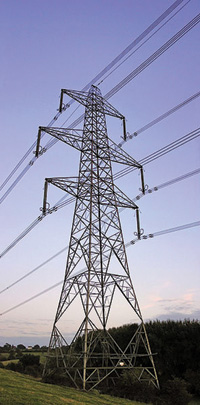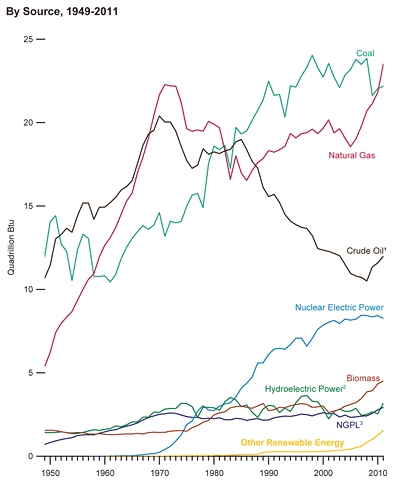The Future of Fracking: Exploring Human Energy Use
Today few states require Earth science as part of the high school curriculum—despite the fact that both NSES and AAAS Benchmarks have substantial Earth and space science content standards. However, this may change. The Next Generation Science Standards (NGSS) give equal importance to Earth and space science, physical science, life science and engineering. And it’s likely that the 26 Lead State Partners that helped develop the standards will adopt them in their entirety, which could provide a significant motivation for incorporating more Earth and space science content into their required curriculum.

When the NGSS are adopted, many more teachers may be charged with teaching the new content. But the subject will likely be new to these teachers and resources scarce. This is where High-Adventure Science comes in. The National Science Foundation has funded the development of an online curriculum for middle school and high school students that covers five Earth systems and sustainability topics: climate change, fresh water availability, energy use, earth resource availability and land use management. Each module includes interactive computer-based models, real-world data and video of scientists currently working on unanswered questions related to the topic.
Energy use
We have already developed two High- Adventure Science curriculum modules on climate change and on fresh water availability. One new module in development will help students think about where energy comes from and how much energy is used. As the global human population increases, demands for energy increase. To understand the national and international issues that emerge from these energy demands, students must have a basic understanding of energy, energy sources, energy generation, energy use and conservation strategies.
But thinking about energy is complicated. Electricity, for example, is generated by a variety of sources: coal-fired power plants, nuclear power plants, biomass-fired power plants, natural gas-fired power plants, hydroelectric power plants, solar thermal plants, photovoltaics and wind turbines. Humans have managed to harness energy in many ways to power their endeavors, but the production of electricity has effects and consequences.
Our newest module is intended to help students think in terms of energy systems. Our goal is to have students examine how much energy they use, how energy resources are distributed and used globally, and how the quality of life of individuals and societies is affected by energy choices. This is a very big topic—more than students can cover in a one-week module.
One approach, under consideration for the new module, is to look specifically at the intersection of how increases in human population drive the demand for energy resources and how this affects Earth’s systems. We are currently focusing on hydraulic fracturing (also known as “fracking”), in which natural gas is recovered from shale. Between 2000 and 2010, shale gas production in the United States increased dramatically; it now comprises approximately 22% of the total U.S. energy production and is expected to grow further, to an estimated 47% by 2035 (Figure 1). By exploring the future of fracking in detail, we hope that students will see the implications of using natural gas compared to other energy sources, as well as the bigger picture of overall energy use.

Addressing NGSS
The new standards take an Earth’s systems approach, reflecting the interconnectedness of Earth’s different spheres. Human activity on the Earth is also incorporated into the standards, thanks to an increasing awareness of human impact on Earth’s surface systems and of the critical role that natural hazards and resource availability play in human society as populations, industrialization and urbanization increase.*
For example, ESS3.A: Natural Resources states that students should understand that all of the materials, energy and fuels we use are derived from natural sources and their use affects the environment; some resources are renewable over time while others are not; resources are distributed unevenly around the planet as a result of past geologic processes; resource availability has guided the development of human society; and use of natural resources has associated costs, risks and benefits. Additionally, ESS3.C: Human Impacts on Earth Systems focuses on the concept of sustainability and emphasizes responsible management of natural resources.
The High-Adventure Science curriculum plans to address these learning goals with activities that prompt students to consider where natural gas is found, what Earth processes occurred to form natural gas reservoirs, how humans get access to energy sources, what they use energy for and the risks and benefits of energy use. Models are ideal for exploring this Earth system and the human interactions with it. Students will be able to explore the effects of fracking in different locations of shale below Earth’s surface, see how natural gas is extracted and examine the effects of fracking on contaminating local groundwater. They will also be able to consider how human actions affect both the geosphere and hydrosphere by thinking at the systems level, a crosscutting concept highlighted in NGSS.
By experimenting with interactive models students also gain experience in science practices. The curriculum scaffolds students to ask questions, define problems and engage in argument from evidence. Indeed, a distinctive feature of the High- Adventure Science curriculum is the use of argumentation item sets, which consist of four questions that require students to:
- make scientific claims
- explain their claims based on evidence
- express their levels of certainty
- describe the sources of certainty
These item sets, used throughout the curriculum, encourage students to reflect on evidence from models and real-world data and to evaluate the certainty of scientific claims. Students have shown significant pre- and post-test score gains on previous High-Adventure Science modules that have been classroom tested. Armed with these essential critical reasoning skills, students will be able to think about sustainability and reducing environmental impacts while improving lifestyles and promoting security for the world’s population.
Earth may have a certain resiliency, allowing it to adapt to anthropogenic impacts, but it’s clear that Earth’s systems are changing under the pressures exerted by humans. It is critical to understand fundamental Earth science concepts as a foundation for analyzing human impact on Earth’s systems. The NGSS acknowledge this as an essential principle. High-Adventure Science is providing resources to put these ideas into practice. And with luck and the adoption of NGSS, Earth science will be taught in more of our nation’s classrooms.
Amy Pallant (apallant@concord.org) directs High-Adventure Science.
This material is based upon work supported by the National Science Foundation under grant DRL-1220756. Any opinions, findings, and conclusions or recommendations expressed in this material are those of the author(s) and do not necessarily reflect the views of the National Science Foundation.
